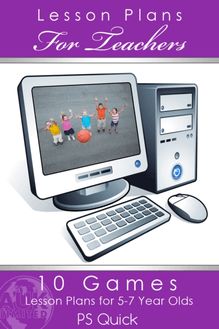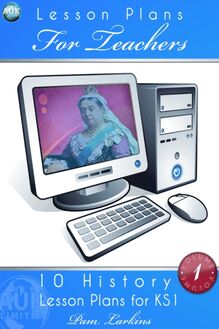-
 Univers
Univers
-
 Ebooks
Ebooks
-
 Livres audio
Livres audio
-
 Presse
Presse
-
 Podcasts
Podcasts
-
 BD
BD
-
 Documents
Documents
-
- Cours
- Révisions
- Ressources pédagogiques
- Sciences de l’éducation
- Manuels scolaires
- Langues
- Travaux de classe
- Annales de BEP
- Etudes supérieures
- Maternelle et primaire
- Fiches de lecture
- Orientation scolaire
- Méthodologie
- Corrigés de devoir
- Annales d’examens et concours
- Annales du bac
- Annales du brevet
- Rapports de stage
La lecture à portée de main
Vous pourrez modifier la taille du texte de cet ouvrage
Découvre YouScribe en t'inscrivant gratuitement
Je m'inscrisDécouvre YouScribe en t'inscrivant gratuitement
Je m'inscrisEn savoir plus
Vous pourrez modifier la taille du texte de cet ouvrage
En savoir plus

Description
Informations
| Publié par | Andrews UK |
| Date de parution | 25 juin 2014 |
| Nombre de lectures | 0 |
| EAN13 | 9781783338177 |
| Langue | English |
Informations légales : prix de location à la page 0,0150€. Cette information est donnée uniquement à titre indicatif conformément à la législation en vigueur.
Extrait
Title Page
10 GYMNASTICS LESSON PLANS FOR 5-7 YEAR OLDS
P S Quick
Publisher Information
Published in 2014 by
Andrews UK Limited
www.andrewsuk.com
The right of P S Quick to be identified as the Author of this Work has been asserted in accordance with the Copyright, Designs and Patents Act 1998
Copyright © 2014 P S Quick
All rights reserved. No part of this publication may be reproduced, stored in a retrieval system, or transmitted, in any form or by any means without the prior written permission of the publisher, nor be otherwise circulated in any form of binding or cover other than that in which it is published and without a similar condition being imposed on the subsequent purchaser. Any person who does so may be liable to criminal prosecution and civil claims for damages.
Introduction
These ten gymnastic lessons are designed to motivate children to develop their fundamental movement skills. They will help them to develop positive attitudes that enable them to become more confident and competent in their agility, balance and co-ordination while working alone or with others.
Each lesson includes lesson objectives, a list of resources, a warm-up activity, an introductory floor work activity, suggestions for activities using apparatus and a cool-down activity. There are also ideas for extension activities, assessment cues and ICT opportunities with web links where appropriate.
Lesson 1
Using Space Safely
Learning Objectives and Outcomes Children will learn to use the workspace safely and efficiently They will perform basic skills when travelling and also being still. They will describe their own movements and observe, describe and copy the movements of others.
Resources A hoop for every child.
Warm-up
Have children sitting on the floor near to you. Ask children if anyone knows why they should warm up their bodies before exercise. Ensure they understand the need to warm up muscles gently before strenuous exercise so the body is not injured.
Discuss how children can find and sit in a space without being too near to each other. Suggest children could stretch out their arms and turn round gently before they sit down. Practice finding a space two or three times by walking. Give the command ‘Walk to a space.’
Continue the activity but change the way the children move, perhaps jogging and then using more strenuous movements such as running or jumping as they warm up.
Floor Work
Tell children they are now going to think about using the space safely. When they move they need to make sure they do not go too close to anyone else or make contact so they need to be watching at all times as they move.
Explain children are going to move in different directions around the room moving only on their feet. If they meet someone they need to move to the side before continuing in the same direction. Give instructions to move forwards, sideways, backwards. Encourage children to use different movements as they do this, such as walking, jogging, jumping and running.
Give children opportunities to move using different pathways such as running in a straight line, a zigzag, or in a curve. Remind children about moving into a free space rather than a crowded area.
Apparatus
Ask children to take a hoop and sit down inside it in a space. Tell children to find as many different ways to move around their hoop as they can. On the command ‘Stop’ they should sit inside their hoop. Give children a few minutes to do this then choose two or three children to describe what they did and demonstrate their movements to the other children.
Now ask children to find different ways of moving into and out of the hoop. Allow time for children to find different ways then again ask two or three children to show what they have done. Pick out children who have used different parts of their bodies or different movements. Give children a few minutes to copy some of these different ways or invent more of their own, improving the quality and control.
Challenge children to find ways of moving from one side of the hoop to the other without any part of their bodies touching the inside of the hoop. After a few minutes let half the class observe the other half doing this then swap over. Ask them to look for different parts of the body making the movement, the speed and the direction used.
Cool-down
Tell children to find a partner then put their hoops facing each other. Ask children to think about how their bodies have changed in the lesson. Did they get hotter or cooler; did their breathing get faster or slower at any time? Explain the need for cooling down their bodies, giving them the chance to return to normal.
Explain that the children will play ‘Copy Cat’ to cool their bodies down. Ask them to face their partner and choose one person to do a stretch. Their partner is the copy cat who performs the identical action. Children then swap roles, stretching another part of the body.
End by children lying on their back, arms by their sides. They should think of the movements they have made this lesson and the way they have used the space safely.
Extension Activities
Children could repeat the lesson but focus on the shapes being made by their bodies. They could also make the pathway for a shape such as a square and link this to work in Maths. They could also use large apparatus instead of hoops for the activities mentioned.
Assessment Can children find a space to sit down that is not too close to others? Do they use the space safely, avoiding touching other children? Can they describe their own movements and the movements of others?
ICT Opportunities
Take a short video of some activities in this lesson. Watch as a class to see how safely they moved and how well they used the space available.
Lesson 2
Stretching and Curling
Learning Objectives and Outcomes Children will recognise and describe how their bodies feel during activity. They will develop the skills of stretching and curling, using increasing control. They will learn how to put out large apparatus safely.
Resources Enough large apparatus such as benches, stools, mats, ladders, planks for five or six groups.
Warm-up
Ask children to find and space and sit down. Remind children that each lesson will begin with a warm-up activity. Ask if anyone can explain to the others why this is important.
Explain children will warm up by playing ‘Follow my Leader’. Children will move in a way instructed by the teacher with the second child copying the movements of the first child exactly. When the command ‘Stop’ is given the leader must choose a body part to put on the floor, for example the bottom or just the feet.
-
 Univers
Univers
-
 Ebooks
Ebooks
-
 Livres audio
Livres audio
-
 Presse
Presse
-
 Podcasts
Podcasts
-
 BD
BD
-
 Documents
Documents
-
Jeunesse
-
Littérature
-
Ressources professionnelles
-
Santé et bien-être
-
Savoirs
-
Education
-
Loisirs et hobbies
-
Art, musique et cinéma
-
Actualité et débat de société
-
Jeunesse
-
Littérature
-
Ressources professionnelles
-
Santé et bien-être
-
Savoirs
-
Education
-
Loisirs et hobbies
-
Art, musique et cinéma
-
Actualité et débat de société
-
Actualités
-
Lifestyle
-
Presse jeunesse
-
Presse professionnelle
-
Pratique
-
Presse sportive
-
Presse internationale
-
Culture & Médias
-
Action et Aventures
-
Science-fiction et Fantasy
-
Société
-
Jeunesse
-
Littérature
-
Ressources professionnelles
-
Santé et bien-être
-
Savoirs
-
Education
-
Loisirs et hobbies
-
Art, musique et cinéma
-
Actualité et débat de société
- Cours
- Révisions
- Ressources pédagogiques
- Sciences de l’éducation
- Manuels scolaires
- Langues
- Travaux de classe
- Annales de BEP
- Etudes supérieures
- Maternelle et primaire
- Fiches de lecture
- Orientation scolaire
- Méthodologie
- Corrigés de devoir
- Annales d’examens et concours
- Annales du bac
- Annales du brevet
- Rapports de stage











